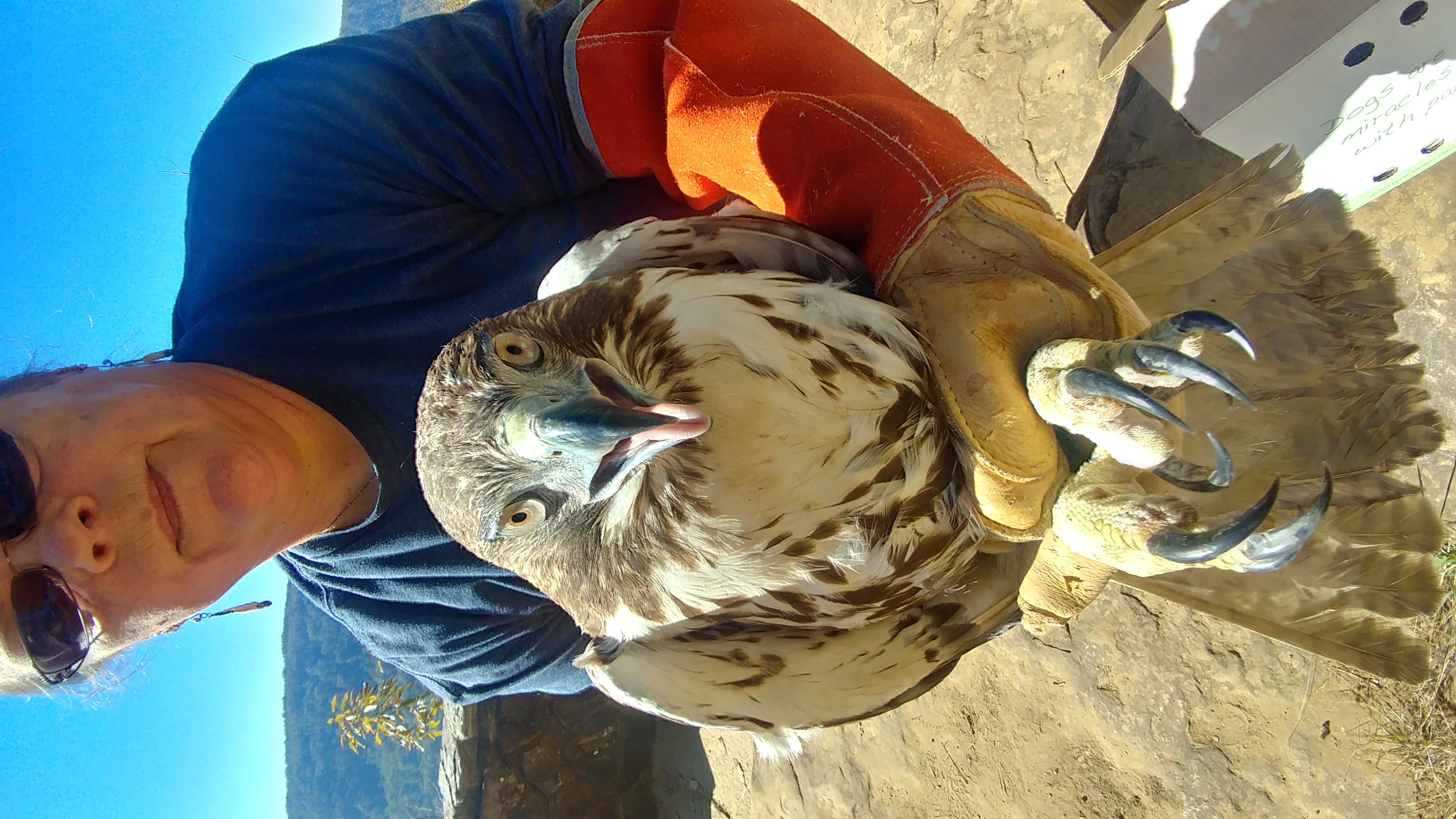Wildlife rehabilitation requires lifelong learning. Parks has attended symposia at Raptors on the River in Louisville, Kentucky, as well as symposia sponsored by the National Wildlife Rehabilitators Association and the International Wildlife Rehabilitation Council.
Her story reflects the missions of these organizations. It is a local story, but one with national and international implications.
Six years ago, she partnered with Jeff and Sherry Teas and Zeno and Katherine Beaty to create Happinest Wildlife Rehabilitation and Rescue. Teas rehabilitates songbirds and wildlife. She leaves the raptors to Parks. Zeno Beaty works with any any type of wild animal and helps with raptors. Zeno is developing a raptor education program, but Covid-19 has slowed that process because of limits on the size of public gatherings.
Happinest also works with other individuals and organizations, including the Chattanooga Zoo, which does intake and some immediate care of injured raptors. These birds are soon transferred to Happinest.
Happinest refers some calls to Jerry Harvey of Opie Acres Wildlife and Opossum Rehabilitation. He specializes in opossums and receives a lot of the animals of each year.
Kate Harrell, who also teaches at the University of Tennessee at Chattanooga, accepts squirrels, groundhogs, and rabbits at her Sugar Hill facility, also located on Signal Mountain.
According to Parks, the adult birds that come into her care are often emaciated due to West Nile Virus. Secondary poisoning from eating rats poisoned with rodenticides poses another major threat to adult birds of prey.
Young birds are inexperienced hunters. They sometimes have infected bite wounds from prey animals. These hamper their ability to hunt. They are also prone to vehicle strikes because they hang around highways to pick up roadkill and hunt mice and rats attracted to food scraps from littering.
Parks expects the number of animals admitted to wildlife rehabilitation centers to increase in the coming years due to development and habitat fragmentation.
Parks stated that wildlife rehabilitation is expensive, and very few veterinarians are willing to work with birds of prey. State and federal agencies regularly inspect wildlife facilities and have strict laws regarding their operation.
Since no fees are charged for the rehabilitation service, she relies on individual and corporate donations. She applies for grants whenever they are available.
Describing her daily operations, Parks said that every day is a new day. Raptors are good at finding new ways to get themselves injured. She sees 125 to 175 new birds each year, and some weeks she may see a new bird each day. Her facility includes two fifty-foot flight cages to exercise the birds and several mews to house the birds.
She occasionally goes into the field to retrieve birds, but more often, they are brought to her. She asks that people call her before bringing in birds. Some birds can ultimately be released right where they are found.
Speaking of young birds that have fallen from the nest, Parks said, “They can be renested, and the parents will accept them. If necessary, they can be placed in another nest, and the adult birds will foster them.” Wayne Roberson of Sacred Circle Tree Service is an experienced tree climber and does the renesting.
Young birds sit on branches beside the nest and are known as branchers. They can fall to the ground and need to be put back in the nest.
Some birds die before getting to Happinest. Some are too injured to save, but there are success stories. When asked if she could talk about one particularly memorable bird, she references a large female bald eagle struck by a vehicle on Amnicola Highway.
Parks provided immediate care for the eagle and transferred her to the University of Tennessee Veterinary School. The bird then spent time recovering at the American Eagle Foundation at Dollywood and returned to Chattanooga for release.
During the interview, Parks listed the animals currently in her care: Four young red-tailed hawks, two barred owls, five screech owls, one black vulture, and one broad-winged hawk. The broad-winged hawk will be overwintered and released. The others will be released as soon as they have recovered.
According to The National Wildlife Rehabilitators’ Association: ”Estimates indicate over 75 percent of the animals cared for are affected in some manner by human activities. Nest tree destruction, vehicle collisions, unrestrained pets, illegal or legal wild “pet” trading, intentional or unintentional poisonings, including oil contamination, window collisions, and non-target shooting often causes wildlife distress,” or injuries.
With increased residential, industrial, and extractive development, the number of human/wildlife interactions is likely to increase. This could well lead to a need for additional wildlife rehabilitation services.
The International Wildlife Rehabilitation Council has a broadened scope, including educational programs. ”We provide evidence-based education and resources on wildlife rehabilitation to move the field of wildlife rehabilitation forward; to promote wildlife conservation and welfare; and to mitigate human-wildlife conflicts worldwide, through a better understanding of wild animal ecology, behavior, and welfare.”

